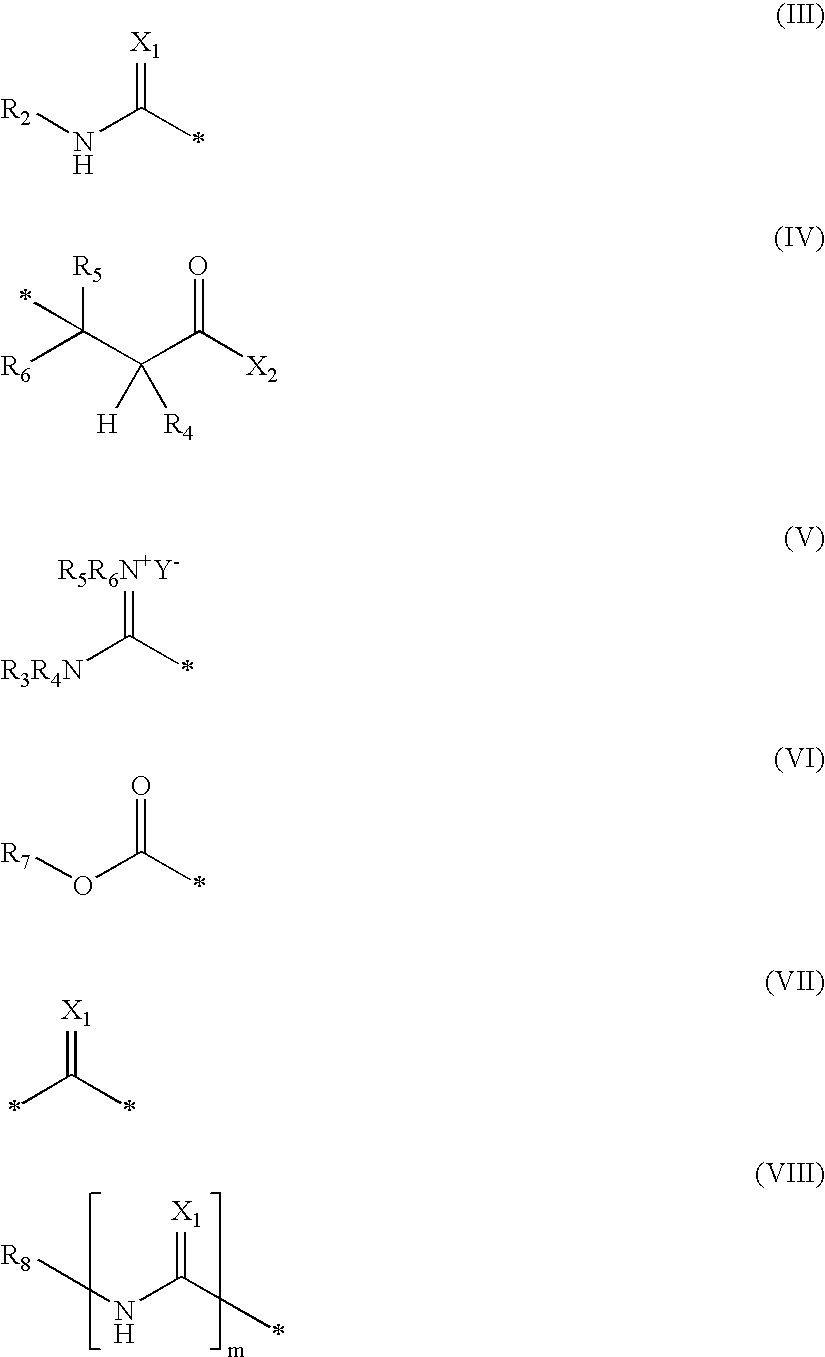Blocked aliphatic thiol stabilizers for photothermographic materials
a technology of aliphatic thiol and stabilizer, which is applied in the field of imaging materials, can solve the problems of distinctly different problems, increased formation of various types of“fog” or other undesirable sensitometric side effects, and much effort in the preparation and manufacture of photothermographic materials, and achieves the effect of improving the desktop print stability of photothermographic materials, and without significant loss of desired sensitometric properties
- Summary
- Abstract
- Description
- Claims
- Application Information
AI Technical Summary
Benefits of technology
Problems solved by technology
Method used
Image
Examples
example 1
Preparation of Aqueous-Based Photothermographic Material
[0244] An aqueous-based photothermographic material of this invention was prepared in the following manner.
[0245] Preparation of Developer (D-1) Dispersions:
[0246] Aqueous slurries were prepared containing Developer D-1, CELVOL® 203S, poly(vinyl alcohol), TRITON® X-114 surfactant, and BYK-022. The poly(vinyl alcohol), TRITON®X-114 surfactant, and BYK-022 were added at a level of 10.0%, 3.0%, and 0.1% by weight to that of Developer D-1, respectively. The mixture was milled with 0.7 mm zirconium ceramic beads for about 7 hours. Examination of the final dispersion by transmitted light microscopy at 1000× magnification showed well-dispersed particles, all below 1 μm.
[0247] Preparation of Blocked Aliphatic Thiol Dispersion:
[0248] A solid particle dispersion of blocked aliphatic thiol compound was prepared by combining 10 parts PS-Compound, 2.7 parts of SPP 3000 poly(vinyl alcohol), 0.05 parts of TRITON® X-200 surfactant, and 87...
example 2
Evaluation of Blocked Aliphatic Thiol Compounds
[0280] Components A, B, D, and F: Components A, B, D, and F were prepared as described in Example 1.
[0281] Component C: A mixture of 1,3-dimethylurea, succinimide, and xylitol was dissolved in water by heating at 50° C. The dispersion of Developer D-1 described above was added to the above solution at room temperature.
[0282] Component E: A portion of hydrated gelatin (23% de-ionized lime-processed gelatin / 77% water) was placed in a beaker and heated to 40° C. for 10 minutes. A portion of a dispersion of 6.5 μm polystyrene beads in gelatin was placed in another beaker and heated to 40° C. for 10 minutes to melt. The gelatin melts were combined and to the mixture was added a 20% aqueous solution of 1,3-dimethylurea, a 5% aqueous solution of boric acid, and a 4% active aqueous solution of ZONYL® FS-300 surfactant.
[0283] Coating and Evaluation of Photothermographic Materials:
[0284] The components were coated and dried as described in E...
example 3
Photothermographic Materials Incorporating Blocked Aliphatic Thiol Compounds in the Presence or Absence of Boric Acid
[0289] Components A, B, C, D, E, and F: Components A, B, C, D, E, and F were prepared as described in Example 2.
[0290] Coating and Evaluation of Photothermographic Materials:
[0291] The components were coated and dried as described in Example 1. The imaging layer and overcoat layer had the dry coating weights shown in TABLE VIII.
[0292] Samples were imaged, developed, and evaluated as described in Example 2. The results, shown below in TABLE IX, demonstrate the exceptional, unexpected, and synergistic ability of boric acid along with a blocked thiol compound to improve Desktop Print Stability. Sample 3-2-C incorporating only boric acid did not improve Desktop Print Stability. Sample 3-3-I incorporating only Compound PS-1 improved Desktop Print Stability (decreased ΔDmin from 0.48 to 0.32, a [Δ(ΔDmin)] of 0.16). Sample 3-4-I, incorporating both a blocked thiol and bo...
PUM
 Login to View More
Login to View More Abstract
Description
Claims
Application Information
 Login to View More
Login to View More - R&D
- Intellectual Property
- Life Sciences
- Materials
- Tech Scout
- Unparalleled Data Quality
- Higher Quality Content
- 60% Fewer Hallucinations
Browse by: Latest US Patents, China's latest patents, Technical Efficacy Thesaurus, Application Domain, Technology Topic, Popular Technical Reports.
© 2025 PatSnap. All rights reserved.Legal|Privacy policy|Modern Slavery Act Transparency Statement|Sitemap|About US| Contact US: help@patsnap.com



